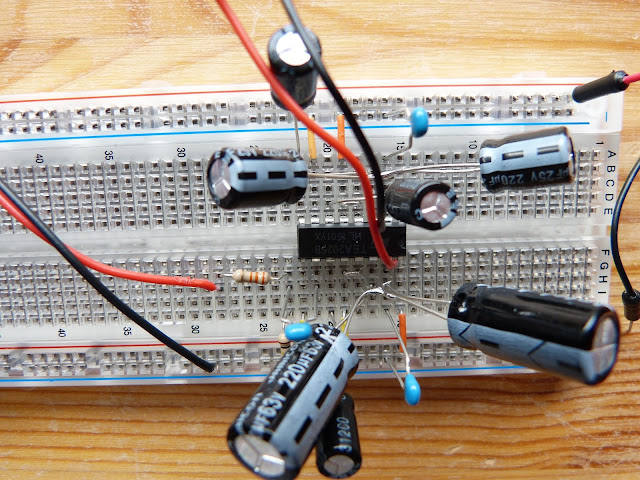I have build the circuit temporarily without filtering for two reasons. The first reason is that I want to use this circuit to test the TEA2025B's that I bought from Aliexpress which were in a very bad shape when they arrived. Secondly I want to rule out problems in the non-filtering part of the circuit.
 |
| Overview of the experiment. With on the left side the 4-inch speaker. The audio is supplied by a Nexus 7 inch tablet. |
My first try didn't go so well. After powering up the circuit the first half minute or so the sound is sort of ok but than a terrible distortion kicks in and makes listening unbearable. Furthermore the TEA2025B becomes extremely hot. I unplugged and checked for errors but couldn't find none. I figured that I'm overdriving the amplifier so I increased the 33K and 10K resistor to 100K and 33K respectively without result. I then changed the TEA2025B for another one, again no result. Finally I decreased the voltage to 4,5V (instead of 9V). Now the distortion is gone but I'm still not happy with the sound quality. The sound is very muffled and undefined (sorry I don't have any words to describe it). Not sure how to go forward from here.
 |
| Close-up of the breadboard. The oddly shaped capacitors are the non-polarized capacitors that I made from 220uF capacitors. |
No comments:
Post a Comment
Note: Only a member of this blog may post a comment.